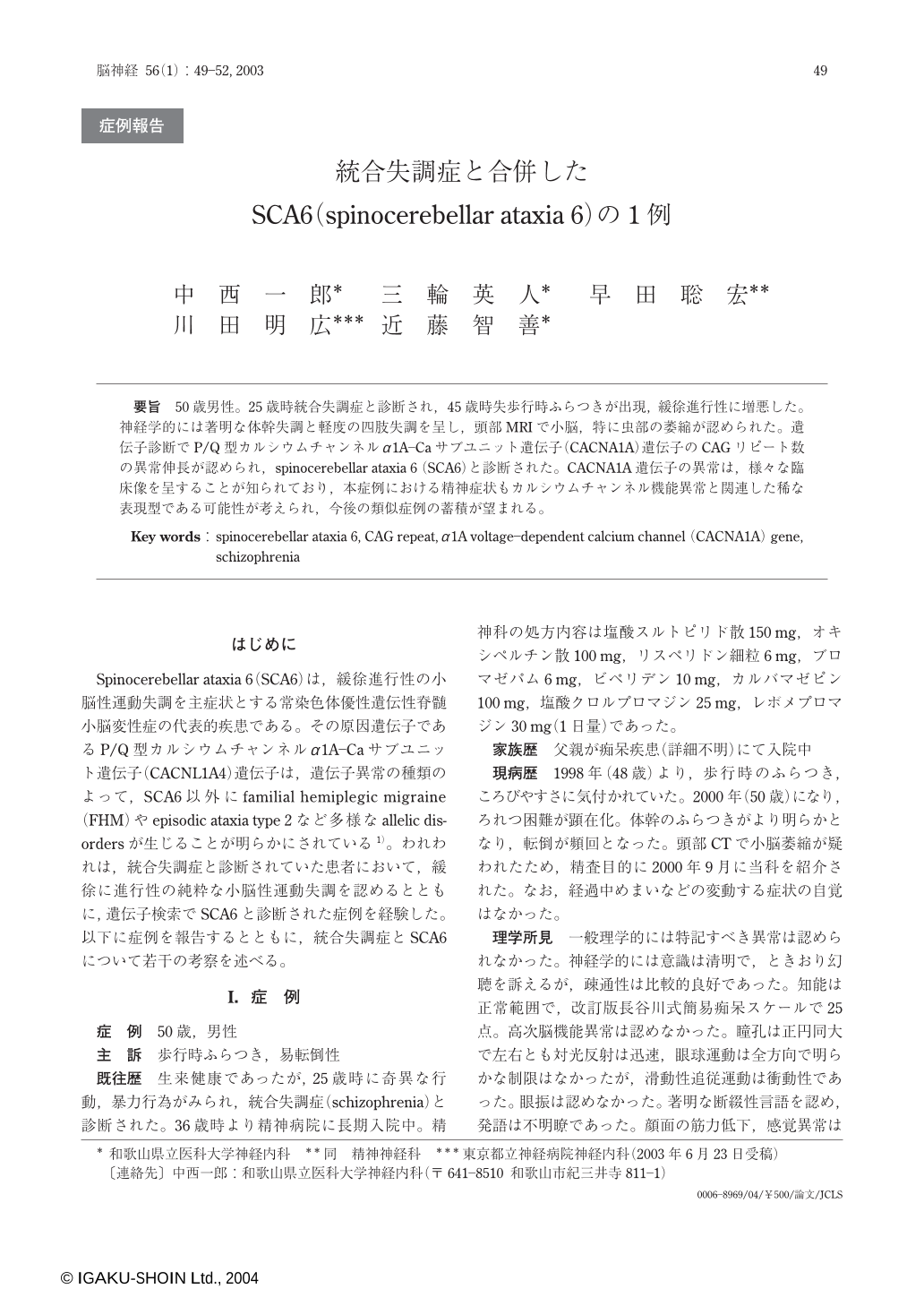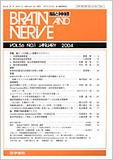Japanese
English
- 有料閲覧
- Abstract 文献概要
- 1ページ目 Look Inside
要旨 50歳男性。25歳時統合失調症と診断され,45歳時失歩行時ふらつきが出現,緩徐進行性に増悪した。神経学的には著明な体幹失調と軽度の四肢失調を呈し,頭部MRIで小脳,特に虫部の萎縮が認められた。遺伝子診断でP/Q型カルシウムチャンネルα1A-Caサブユニット遺伝子(CACNA1A)遺伝子のCAGリピート数の異常伸長が認められ,spinocerebellar ataxia 6 (SCA6)と診断された。CACNA1A遺伝子の異常は,様々な臨床像を呈することが知られており,本症例における精神症状もカルシウムチャンネル機能異常と関連した稀な表現型である可能性が考えられ,今後の類似症例の蓄積が望まれる。
An abnormally expanded CAG repeats (25, normal; 4-20) was identified in the α1A voltage-dependent calcium channel (CACNA1A) gene of a 50-year-old Japanese man with 25 years history of schizophrenia. At age 45, he first noted unsteadiness of standing and gait, which gradually worsened subsequently. In addition to the psychiatric symptoms of schizophrenia, neurological examination revealed marked truncal ataxia and mild limb ataxia. Brain magnetic resonance imaging showed atrophy of the cerebellar vermis. Gene analysis confirmed the diagnosis of spinocerebellar ataxia type 6 (SCA 6). No family members showed similar neuropsychiatric symptoms except that the patientユs father had been suffering from an unknown dementing disease. Occurrence of both schizophrenia and SCA 6 in the identical patient may be coincidental. However, growing evidence has shown that various mutations in the CACNA1A gene are associated with phenotypic variability, such as progressive ataxia, episodic ataxia, migraine, coma, epilepsy and mental retardation. Therefore, the schizophrenic symptoms, association of which with SCA 6 has previously reported in a few cases, may represent rare clinical features of the channelopathy associated with the mutation in the CACNA1A gene.
(Received : June 23, 2003)

Copyright © 2004, Igaku-Shoin Ltd. All rights reserved.


